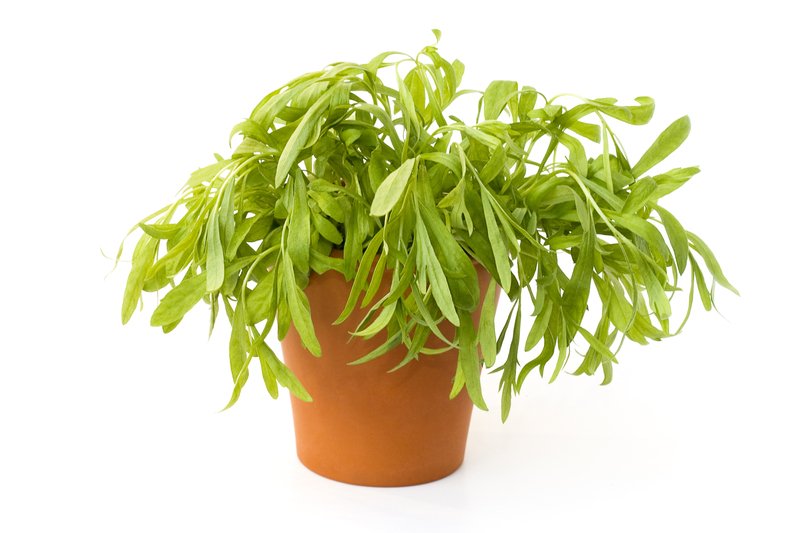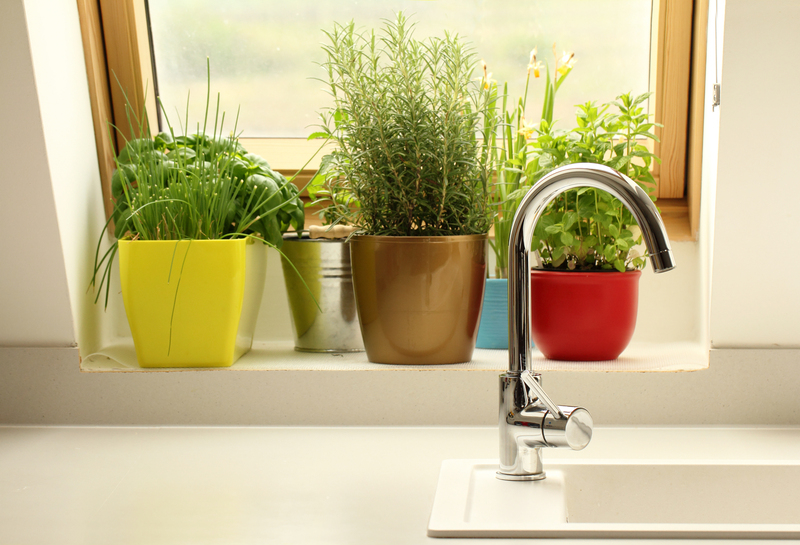Maximize your harvest with strategic container gardening
Posted on 01/09/2025
Maximize Your Harvest With Strategic Container Gardening
Container gardening isn't just a solution for those with limited space--it's an innovative, productive approach designed to maximize your harvest. Whether you have a small balcony, patio, or even just a sunny windowsill, strategic planning and the right techniques can help you yield a remarkable bounty. In this comprehensive guide, we'll explore practical tips, must-know strategies, and creative solutions to help you unlock the full potential of your container garden.
Why Choose Container Gardening?
Gardening in containers offers a unique blend of flexibility, versatility, and control over your planting environment. Maximizing harvest with container gardening becomes possible by taking advantage of the following benefits:
- Space Efficiency: Perfect for urban gardeners with minimal space.
- Mobility: Move your plants to capture optimal sunlight or shelter them from extreme weather.
- Pest & Disease Management: Isolated containers minimize spread and allow for easy treatment.
- Soil Control: Choose or amend soil precisely for each plant's needs.
- Season Extension: Move containers indoors or to sheltered locations to extend growing seasons.
By harnessing these advantages with a thoughtful, strategic approach, your container garden can rival, or even surpass, traditional in-ground plots.

Understanding Strategic Container Gardening
To maximize your harvest through container gardening, it's essential to move beyond basic planting and embrace strategies tailored for productivity and health. This means making data-driven decisions about crop selection, container size, soil, and plant layout. Consider these pivotal questions:
- Which crops offer the highest yields for confined spaces?
- How can you combine plants for synergistic growth?
- What watering and feeding routines provide peak productivity?
- How do you handle pest control without chemicals?
Let's dive into each aspect for a bountiful harvest.
Choosing the Best Crops for Containers
High-Yield Vegetables
Selecting high-yielding crops is the first step to a productive container garden. Some vegetables are naturally suited for confined root spaces and quick turnover. Consider planting:
- Tomatoes (determinate varieties thrive in pots and produce heavily)
- Leafy greens (lettuce, spinach, arugula--harvest baby leaves for continuous growth)
- Radishes (fast-growing and compact)
- Bush beans (productive and space-efficient)
- Peppers (compact, manageable, highly productive)
- Herbs (basil, parsley, cilantro, mint--promote dense planting)
Fruiting Plants and Dwarf Varieties
For those seeking maximize fruit harvest in limited space, opt for compact or dwarf cultivars. Strawberries, dwarf blueberries, and "patio" versions of squash or cucumbers will thrive in containers and yield generously.
Succession & Interplanting Strategies
To keep containers productive year-round, practice succession planting--as one crop finishes, sow another suitable for the season. Additionally, use interplanting: combine quick-growers like radishes with slower crops like carrots to maximize both time and container space.
Container Selection: Size, Material, and Placement
Choosing the Right Size
- Root Depth Matters: Deep-rooted plants (tomatoes, peppers) require pots at least 12-18 inches deep.
- Volume: Larger containers retain moisture more efficiently and provide roots room to expand, resulting in more robust growth and yield.
- Multipurpose Containers: Consider grow bags, recycled barrels, vertical towers, and self-watering pots for unique spaces and requirements.
Material Insights
The material of your containers affects water retention, insulation, and weight. Here are popular options:
- Plastic: Lightweight, retains moisture, affordable.
- Ceramic or Terracotta: Aesthetically pleasing but may dry out quickly.
- Wood: Natural look, provides better insulation, but may rot if untreated.
- Fabric Grow Bags: Highly breathable, prevents root circling, easy to move.
Optimal Placement for Productivity
Place your containers where plants will receive the necessary sunlight (most vegetables need at least 6 hours of sunlight). Group pots together to create a microclimate, conserve moisture, and facilitate pollination.
Soil & Fertility: The Foundation of Success
Crafting the Ideal Potting Mix
Garden soil is usually too dense for pots, leading to compaction and poor drainage. Instead, create a premium soil mix for containers:
- Base: Blend high-quality potting soil with compost for nutrients.
- Drainage: Perlite or vermiculite improves aeration and drainage.
- Water Retention: Coconut coir or peat moss helps maintain moisture levels.
Feeding for Abundant Growth
Container plants rely on you for nutrients after initial soil stores are depleted. Use a regular fertilization schedule:
- Slow-release organic fertilizers for ongoing nourishment.
- Liquid feed every 2-4 weeks for heavy feeders like tomatoes and peppers.
- Compost tea and worm castings as natural, micronutrient-rich boosters.
Watering Wisely: Techniques for Container Gardens
Efficient watering is crucial to maximize your harvest in containers. Due to increased exposure and reduced soil volume, containers dry out faster than garden beds.
How To Water for Maximum Productivity
- Consistency: Check soil daily; water when the top inch is dry.
- Morning Watering: Reduces evaporation and fungal risk.
- Self-Watering Pots: Use for most sensitive or thirsty crops so roots have a constant source.
- Mulching: Add straw, bark, or even newspaper layers to retain moisture.
Plant Layouts and Space Optimization
One key to maximizing yield in container gardening is thoughtful arrangement. This goes beyond what fits into each pot--how you combine, arrange, and stack containers can expand your harvest.
Utilizing Vertical Space
- Trellises and Stakes: Grow vining crops upward (e.g., pole beans, cucumbers).
- Hanging Baskets: Plant trailing herbs or strawberries above larger containers.
- Shelf Systems and Wall Gardens: Stack pots vertically to increase plant density.
Companion Planting in Containers
- Basil with tomatoes: Enhances flavor and deters pests.
- Carrots and radishes: Different root depths optimize use of space.
- Lettuce under taller peppers: Tall plants shade greens and extend harvests.
Pest, Disease, and Problem Management
Strategic container gardening gives you an upper hand against common garden pests and diseases:
- Isolation: Keep problematic plants separate to contain outbreaks.
- Physical Barriers: Use row covers or netting against insects and birds.
- Natural Sprays: Homemade garlic- or soap-based sprays manage common pests without chemicals.
- Healthy Plants Thrive: Regular water, feeding, and air circulation help prevent most plant stressors.
Harvesting Techniques to Extend & Increase Yield
How and when you harvest can greatly impact your container garden's productivity:
- Pick Frequently: Regular harvesting encourages many plants (like beans, peas, and greens) to produce more.
- Snip, Don't Pull: Use clean scissors or pruners to avoid root disturbance.
- Harvest at Peak Ripeness: The best flavor and nutrition often coincide with maximum yield potential for the next flush of growth.
Year-Round Container Gardening: Extending the Season
Don't limit your bounty to summer! Strategic planning extends your harvest well beyond the traditional season:
- Fall and Winter Greens: Spinach, kale, and Swiss chard tolerate cool weather in sheltered spots.
- Indoor Herbs: Move pots indoors to a sunny window for fresh herbs all winter.
- Early Starts: Begin heat lovers like tomatoes inside before the last frost for a jumpstart on spring.
Creative Solutions for Limited Spaces
Maximize Micro-Spaces
- Rail Planters: Fit herbs and greens along balcony rails or fences.
- Window Boxes: Perfect for lettuce, radishes, or small root crops.
- Corner Stands: Use every nook for extra pots or grow bags.
DIY Upcycled Containers
- Recycled buckets and barrels
- Shoe organizers for vertical herb gardens
- Old drawers or crates lined for drainage
Just ensure all containers provide adequate drainage for healthy roots.

Container Gardening Mistakes to Avoid
To truly maximize your container harvest, sidestep common pitfalls that hinder growth and productivity:
- Using inappropriate or compacted soil
- Overcrowding plants
- Poor drainage leading to root rot
- Neglecting regular feeding and watering
- Underestimating sunlight requirements
Conclusion: Unlock Your Container Garden's Full Potential
With strategic container gardening, even the smallest spaces can become powerhouses of fresh, homegrown produce. By choosing the right crops, optimizing containers, tailoring soil and nutrition, using vertical and companion planting, and maintaining best practices for care and harvest, you can maximize your garden's productivity throughout the year.
Remember, every balcony, stoop, or sunny corner presents an opportunity to grow. Apply these container gardening strategies and transform your space into a lush, edible oasis--no matter its size. Start today, and enjoy bigger, better harvests tomorrow!



